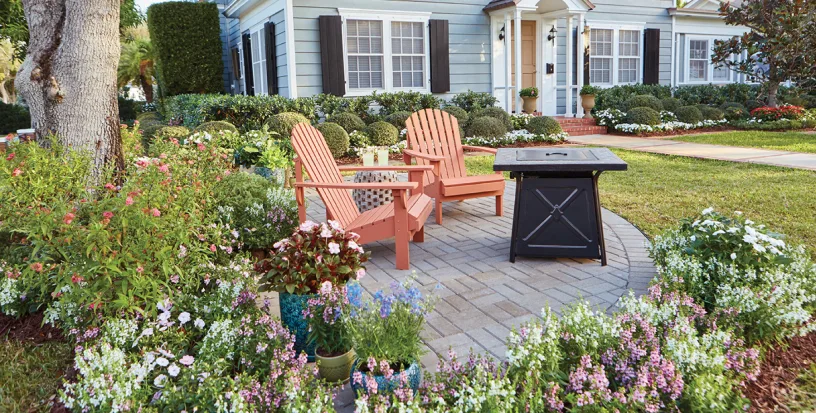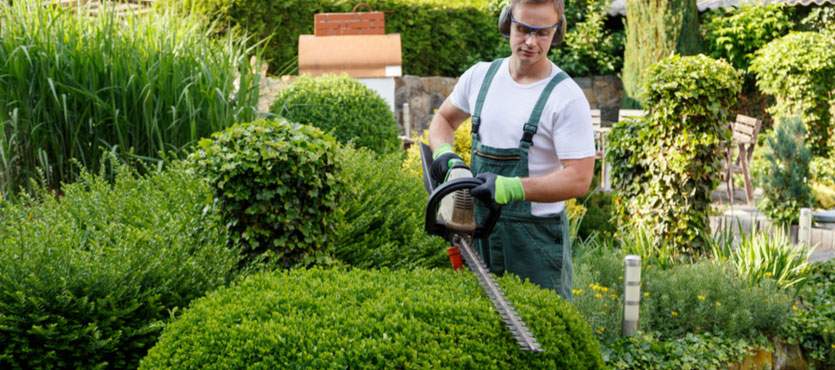Boost Your Home's Appeal with Landscaping San Marcos Professionals
Boost Your Home's Appeal with Landscaping San Marcos Professionals
Blog Article
Expert Landscaping Solutions for Sustainable Outdoor Change
Enhancing outside rooms with expert landscape design solutions can use greater than simply aesthetic charm; it can grow a lasting environment that benefits both homeowner and the world. From picking indigenous plants to applying water preservation strategies and utilizing environmentally friendly hardscape remedies, the opportunities for lasting outside change are large. By recognizing the relevance of maintenance practices that support sustainability, expert landscaping companies can truly make an enduring influence on the outside spaces they deal with.
Benefits of Sustainable Landscape Design
Lasting landscaping offers various ecological and economic benefits for both residential property proprietors and the neighborhood. By applying sustainable practices such as xeriscaping, using indigenous plants, and decreasing water use, home owners can significantly lower their ecological effect. These approaches not only preserve water however likewise promote biodiversity and lower the demand for unsafe chemicals and fertilizers.

From a neighborhood viewpoint, lasting landscape design plays an important role in improving air and water top quality, reducing urban warmth island impacts, and supplying environments for neighborhood wildlife. These advantages contribute to producing healthier and much more lasting atmospheres for everyone to enjoy.
Indigenous Plants Selection and Style
When intending a landscape layout, choosing indigenous plants is crucial for enhancing sustainability and community health. Indigenous plants are adapted to the local environment, dirt conditions, and bugs, making them low-maintenance and extra resistant to thrive in their all-natural atmosphere. Including indigenous plants right into landscaping develops not just enhances biodiversity yet likewise supports pollinators, valuable insects, and neighborhood wild animals.
Creating with indigenous plants involves careful factor to consider of variables such as plant size, growth routine, blossom time, and water needs to produce a aesthetically appealing and sustainable landscape. By picking a varied choice of native plants, landscape developers can create balanced environments that attract a range of varieties and add to the general health of the setting.
Additionally, indigenous plants can help in reducing water intake, lower the need for chemical pesticides and fertilizers, and enhance dirt quality with their all-natural procedures. With correct choice and style, indigenous plants can change outside areas right into growing, sustainable landscapes that benefit both the community and the atmosphere.
Water Conservation Methods
Integrating indigenous plants into landscape design develops not just enhances biodiversity but likewise sustains pollinators, valuable pests, and neighborhood wildlife, which underscores the significance of implementing water preservation methods in landscape design techniques. Water conservation is vital for lasting exterior areas, especially in areas prone to drought or water shortage. One effective strategy is using drip watering systems, which provide water straight to the plant's origin zone, minimizing evaporation and overflow. Mulching is one more important technique that assists keep soil moisture, suppresses weed development, and enhances soil health and wellness.

Eco-Friendly Hardscape Solutions
The utilization of ecologically aware products in hardscape style is an essential facet of producing sustainable outdoor areas. Eco-friendly hardscape remedies include a variety of techniques targeted at reducing ecological effect while enhancing the appearances and functionality pop over here of exterior locations. Including materials such as permeable pavers, recovered timber, recycled plastics, and all-natural rock can substantially lessen the ecological impact of hardscape installations.
Permeable pavers, for circumstances, enable rain to leak into the ground, lowering overflow and avoiding water contamination - Landscaping San Marcos. Recycled plastics can be transformed right into low-maintenance and sturdy hardscape pop over to this site components, providing a sustainable option to typical materials.
Upkeep Practices for Sustainability
To support the ecological honesty of environment-friendly hardscape options, executing strategic maintenance methods is important for ensuring long-term sustainability in outside landscape design projects. Normal maintenance not only maintains the aesthetic allure of the landscape yet likewise adds to its overall sustainability by minimizing environmental effect.
One key maintenance technique for sustainability is proper irrigation management. Reliable watering techniques, such as drip watering systems or rainwater harvesting, help preserve water and advertise plant wellness. Furthermore, regular inspection and adjustment of irrigation systems can stop water wastefulness and make certain optimum hydration for plants.
An additional vital element of lasting maintenance is the responsible usage of fertilizers and pesticides. Going with organic fertilizers and employing integrated parasite monitoring strategies reduces hazardous chemical drainage into the environment, safeguarding both plant and ecosystem equilibrium.
Furthermore, normal cleansing and upkeep of hardscape features like absorptive pavers or rock paths prevent debris build-up and maintain capability while sustaining water infiltration and drainage, therefore reducing the risk of erosion and flooding. Landscaping San Marcos. By sticking to these lasting maintenance methods, outside landscapes can flourish harmoniously while reducing their ecological this post impact
Conclusion
Finally, sustainable landscape design uses many benefits with making use of native plants, water conservation techniques, green hardscape options, and sustainable upkeep practices. By implementing these approaches, outdoor rooms can be transformed into environmentally-friendly and visually pleasing areas that support biodiversity and decrease environmental impact. Purchasing professional landscape design services that focus on sustainability can result in lasting advantages for both the environment and residential property proprietors.
From choosing native plants to carrying out water conservation strategies and using eco-friendly hardscape solutions, the possibilities for sustainable outside change are large. By implementing lasting practices such as xeriscaping, utilizing indigenous plants, and minimizing water usage, residential property owners can significantly lower their environmental effect. Water conservation is vital for sustainable outdoor areas, specifically in areas vulnerable to dry spell or water deficiency. By executing these water preservation techniques, landscaping specialists can create beautiful, sustainable outside areas that profit both the area and the atmosphere.
In conclusion, lasting landscape design provides numerous benefits with the usage of indigenous plants, water preservation methods, environment-friendly hardscape solutions, and sustainable maintenance methods.
Report this page